7 personalization lessons from Netflix: The $25 billion empire
Updated on Mar 31, 2021
With over 203+ million paid users, Netflix is the biggest subscription streaming service in the world.
But they don’t need me to tell you how well they’re doing. Take a peek at their stats:
- Their trial to paid conversion rate is an astonishing 93% (*)
- More than 50% of U.S. households have an active Netflix subscription (*)
- In the past 3 years, Netflix added $1 million in new contracts…Every. 12. Days. (*)
Netflix is STILL growing exponentially. (*)

A lot of other companies offer streaming services, and they aren’t nearly as successful. Even Amazon Prime Video doesn’t come close to bringing in the annual revenue that Netflix marketing strategies do.
So what’s the big secret?
Netflix believes the key to success is personalization. In fact, they’ve been one of the first to adopt mass scale personalization with the help of AI technology.
This helped them stand out in a crowded market and offer a superb user experience to their customers.
In this article, you’ll see 7 personalization tricks that Netflix uses that you can apply to your eCommerce business today.
What is personalization?
Personalization is much more than just sticking the name of your customer on a product.
It’s the process of tailoring the entire end-to-end customer experience based on two types of information:
- The info that the user provides.
- The info that the company gathers from user behavior.
With this insight, a company like Netflix can send its users hyper-relevant offers, messages, and recommendations at precisely the right time and place.
This massively increases the likelihood of a positive response. A survey by Accenture from 2018 says that “91% of consumers are more likely to shop with brands who recognize, remember, and provide them with relevant offers.”
The statistics are looking good, but that doesn’t mean personalization is without its challenges.
The challenges of personalization
The two biggest challenges in personalization come from the sheer amount of new platforms and channels where your customers are active.
From Facebook, Instagram, Twitter, LinkedIn, and even different devices like mobile phones and smartwatches, the first challenge is gathering, tracking, and making sense of the data coming in from all the different places.
Once the data is sorted, the next challenge becomes sending your customers the right message at the right time on the right platform. All in a way that makes customer experience seamless across all the channels.
As you can imagine, mass-scale personalization is a monumental task. But now let’s dive into how Netflix navigates the challenges and creates world-class user experiences.
Big Idea #1: Personalize early and set user expectations from the very first interaction
If you’ve ever browsed Netflix on someone else’s account, you’ll notice that their Netflix experience is vastly different from your Netflix experience.
Netflix does this very deliberately, and they tell you that right off the bat.
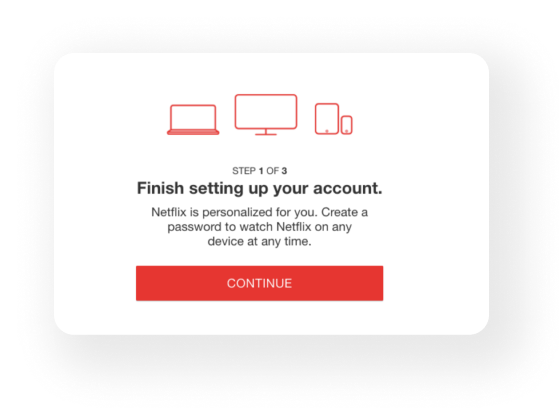
When you create an account, Netflix asks you a series of questions about your viewing preferences – the first data points they gather about you.
Netflix makes you pick your three most favorite TV shows from a library of hundreds.
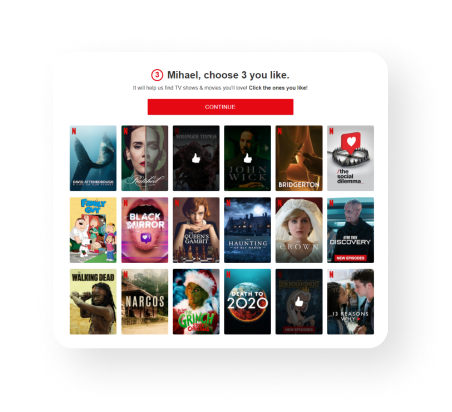
And then they go as far as to ask you on which devices you’re planning to watch these shows.
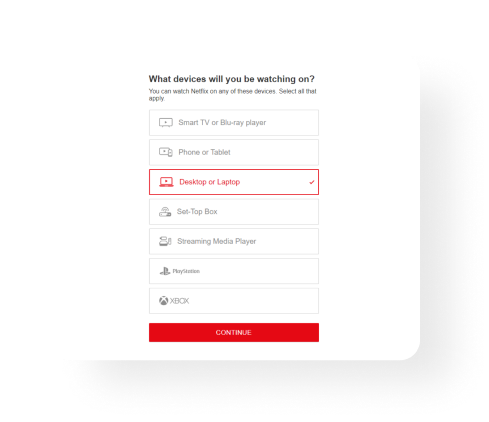
This helps Netflix algorithms immediately recommend other TV shows that you might like.
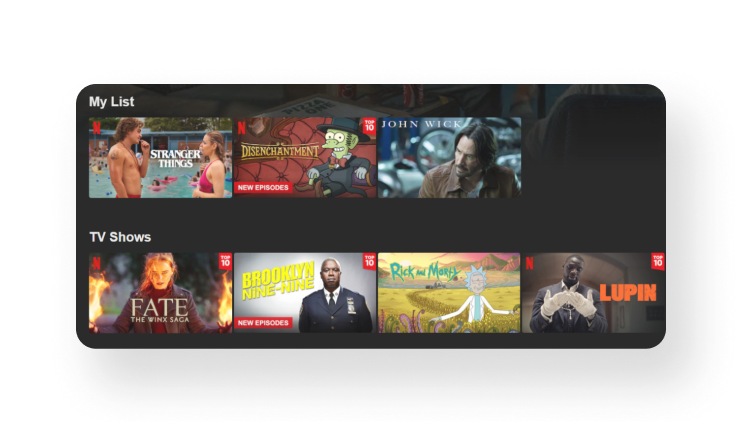
I suspect the algorithm checks and recommends what other users (who picked similar shows) end up watching down the line.
KEY TAKEAWAY: If you have any sort of registration process on your eCommerce store, tell your customers that the information you’ll ask from them will improve their shopping experience. Then gather useful information like demographics or product preferences, and use them at your first personalization attempt to present new shoppers with highly relevant offers.
Big Idea #2: Increase customer engagement with rightly timed notifications
Once Netflix acquires a user, they want them to engage with the app as much as possible and create new viewing habits.
To do this, they send you notifications across many different channels. For example, a push notification.
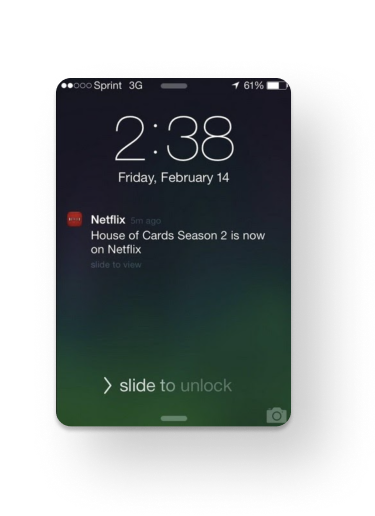
Notice the timing and the content of the notification.
Notice the timing and the content of the notification. They aren’t random.
Netflix not only tracks which TV shows you’re watching but also when and for how long you’re watching them.
Based on this, they send you hyper-personalized notifications at just the right time and place. In this case, at 2:30 PM on a Friday – a time when most of us are switching into the “weekend mode” and beginning to think about all the TV shows we’ll watch when we’re done working.
Netflix also knows push notifications annoy most people. That’s why they don’t gamble and use notifications for a chance to discover new TV shows that you *might* like. They only send the ones that they know you already love.
This way the notification becomes a gift that gets you excited, instead of a source of frustration.
Finally, Netflix knows not everyone has push notifications turned on. That’s why they choose a multi-channel approach to reach as many users as possible.
This is one of their recommendation emails.
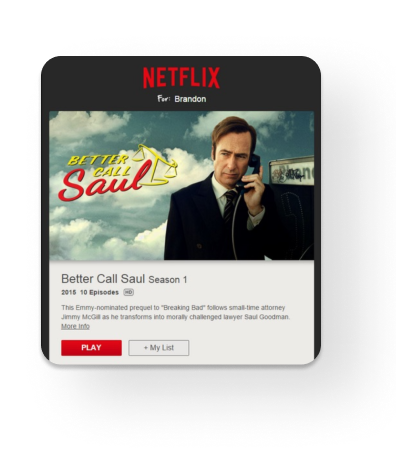
KEY TAKEAWAY: Use push notifications, emails, or social media texts to recommend to users something you know they’ll love. This way you create excitement that gets them back on the app and solidifies new browsing habits.
Big Idea #3: Make your customers buy your products by tailoring the product thumbnail
(*)
We said earlier that if you go on someone else’s Netflix account, the entire experience is vastly different…in fact, it *looks* different.
Netflix found out that the biggest influence on your decision to watch a show or not is the thumbnail picture.
That’s why Netflix tailors the thumbnail on each TV show to match your viewing habits.
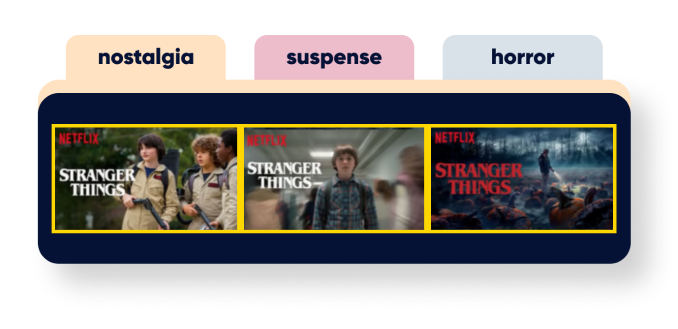
Have you spent a week watching horror shows? Your thumbnails will look more gloomy.
And have you spent the next week watching comedy movies? Your thumbnails will then become more light-hearted.
KEY TAKEAWAY: If you sell products that feature models on the product picture, you could change the thumbnail based on your customer account information:
- Selling a unisex product? Show a male model if the customer is male. And vice versa.
- Selling a product to different demographics? Use a model from the matching demographic as your customer.
Big Idea #4: Keep your customer’s attention by recommending the right product at the right place
Netflix’s biggest challenge is creating a personalized homepage from thousands of possible TV shows and movies.
They don’t want to overwhelm the user. But at the same time, they want to present enough TV shows so everyone can find something they like.
If they fail to do this, the user will bounce and go do something else. (And that’s bad for business.)
This is what Netflix said about their personalized homepages: “To algorithmically create a good personalized homepage means assembling one page per member profile and device from thousands of videos that may be relevant for a member and from easily tens of thousands of potential rows, each with a variable number of videos.”
What this means is that the Netflix marketing strategies recommendation algorithm works in two dimensions: rows (horizontal) and groups (vertical).
Vertically Netflix shows you categories that you might enjoy the most. And horizontally, a series of TV shows most similar to what you’ve been watching (with minor deviations to allow new discoveries).
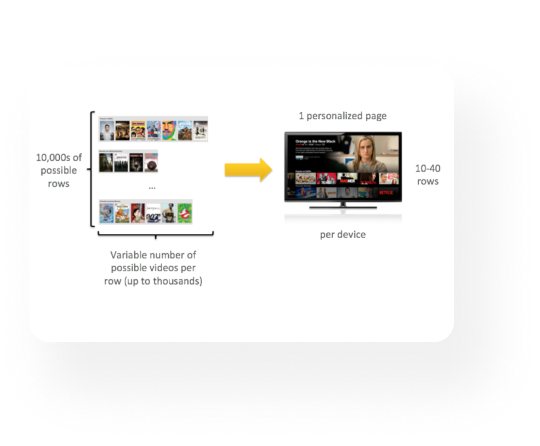
Every once in a while, Netflix marketing strategies will permutate the groups and videos to “freshen up” your homepage. This way, TV shows that you didn’t notice while you browsed Netflix in the morning, might appear at the top in the evening.
KEY TAKEAWAY: If you offer many products, personalize your product catalog in two dimensions: groups and rows. Make sure you mix the products in rows to freshen up the user’s experience each visit and resurface good recommendations they might have missed before.
Big Idea #5: Anticipate what and when the users will buy based on their spending history
The buying frequency of customers is very stable across time.
This means that with the right algorithm, eCommerce companies can accurately predict when the next time their customers will enter the “buying mode.”
Netflix marketing strategies use the same process to predict which TV shows you’d most likely be interested in. After finishing a binge, Netflix shows you a section like this:
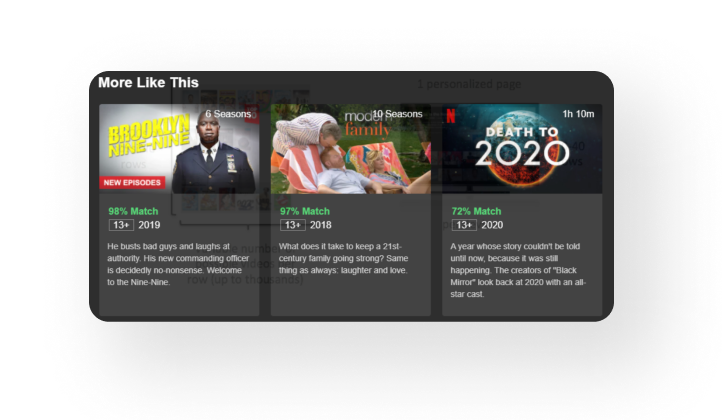
Notice how, instead of the old star system, Netflix attributes a Match score to every TV show. This score tells you how similar a show is to the ones you’ve already watched and enjoyed.
Also notice how some shows have a much lower Match rate. This is Netflix’s way of getting you to discover completely new, out-of-the-box shows that you might not have considered before.
KEY TAKEAWAY: Use your customer’s buying history to predict when and what they’re most likely to buy. Then use a multi-channel approach to recommend offers relevant to them when the time is right.
Big Idea #6: Use a recovery sequence to nudge your customers into finishing what they’ve started
Netflix tracks a ton of engagement metrics. One of these is the watch time.
You’ll notice that after watching something (like a season or an episode) but not finishing it, Netflix will push very hard to get you back on the show.
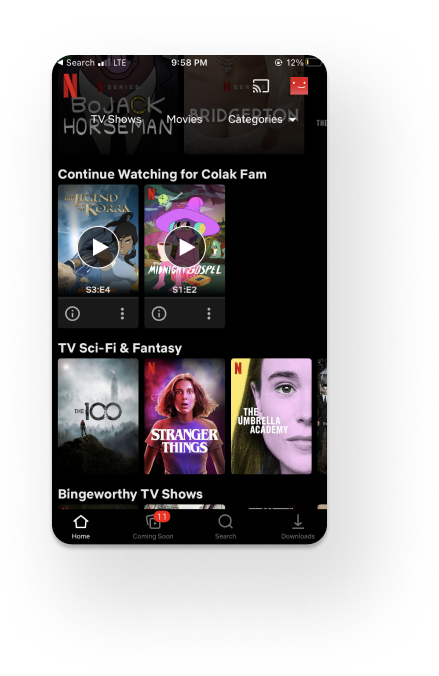
These red incomplete bars are very alluring. Humans love closure. And these red bars create mental states called “open loops,” which our brains naturally want to close.
Netflix marketing strategies focus on that as long as they get you to watch for even just 5 minutes, the likelihood of you staying for another five skyrockets.
KEY TAKEAWAY: Use recovery sequences to remind your customers that they’ve left something incomplete and that they need to:
- Finish the order.
- Return to your website.
- Keep watching your sales video.
Big Idea #7: Build customer loyalty and outpace your competition with AI-powered software
Finally, Netflix doesn’t just use your behavior data to make predictions. They also ask YOU what you think about the show.
You can see that with their “like/dislike” buttons.
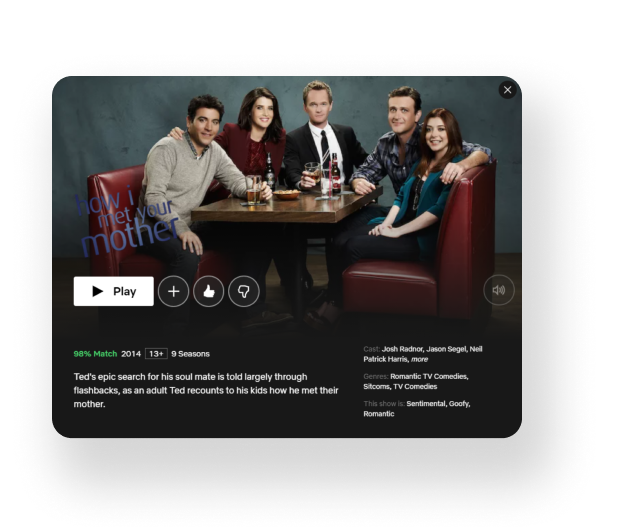
Netflix marketing strategies use this data to enhance their behavior-tracking algorithms and give you better and better recommendations the more you use their system.
This positions Netflix as the premium streaming provider and gives them a lot of value that keeps compounding as time goes on. You wouldn’t be very eager to switch your streaming provider after using Netflix for a few months since the personalization they create by then simply outcompetes everything that’s on the market.
This way Netflix creates an insane amount of customer loyalty and outpaces their competition with smart AI algorithms.
KEY TAKEAWAY: Keep improving the personalization and tailoring the customer experience with surveys, relevant offers, and various loyalty rewards to outpace your competition down the line.
Want to get personal?
Our digital growth consultants have led some of the world’s biggest brands’ personalization efforts. Get in touch to learn how they can make personalization drive engagement and growth for you.



















